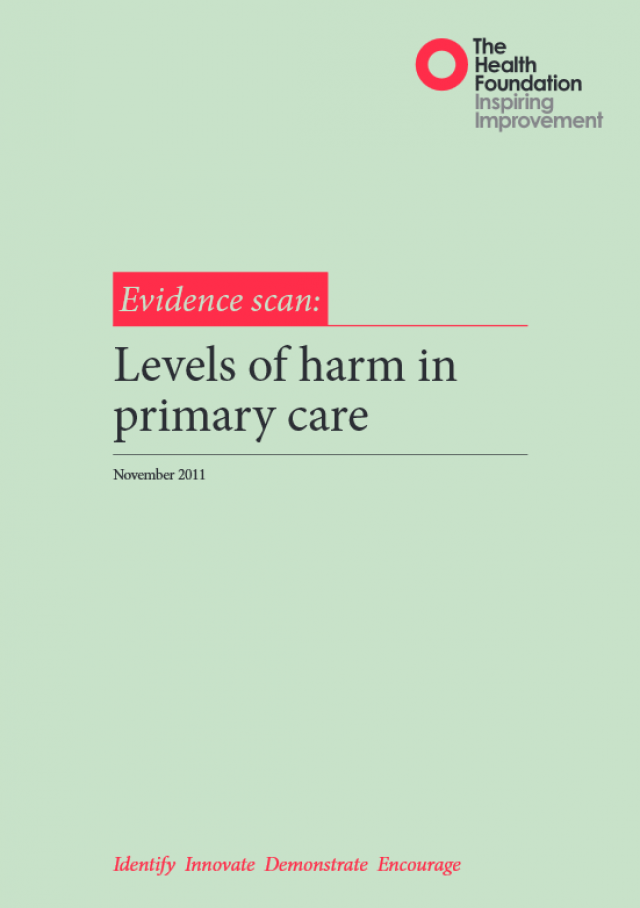Levels of harm in primary care
November 2011
About 1 mins to read

Key points
- Around one in ten people experience harm from hospital care, but the evidence for rates in primary care is sparse.
- Studies have widely varying estimates of harm, from less than 1% to 24%.
- The most robust studies suggest that 1–2% of consultations are associated with an adverse event in primary care, with the most common errors relating to medication and communication.
- In out-of-hours care, the rate is about 2%.
- The majority of events do not impact significantly on patients.
A great deal of research is available about patient harm in hospital, but less is known about errors in primary care.
This evidence scan collates empirical evidence that addresses the following questions:
- How is harm measured in primary care?
- What are the levels of harm in primary care?
- What are the main causes or sources of harm in primary care?
- Is there unpublished or ongoing work or media stories about this topic?
Work with us
We look for talented and passionate individuals as everyone at the Health Foundation has an important role to play.
View current vacanciesThe Q community
Q is an initiative connecting people with improvement expertise across the UK.
Find out more

